This designer dog has become so popular in recent years that you’ve begun seeing them everywhere. These highly sought-after Golden Retriever-Poodle mixes have become somewhat of a commodity. Luckily, there are so many different varieties of Goldendoodles that each one of them is truly one of a kind. Between the different generations, sizes, and colors of Goldendoodles, you can rest-assured knowing that yours probably won’t look or act like any other Doodle out there.
Table of Contents
- Generations
- Comparing Generational Coat Types & Amount of Shedding
- How Big Will a Goldendoodle Get?
- Goldendoodle Colors
- Where to Get Goldendoodle Puppies
This page is sponsored by our
Featured Goldendoodle Breeders
Doodling All Day Goldendoodles & Bernedoodles
Valdese, NC
Russell, MA
Amarillo, TX
Delivering puppies by car to New York, NY
Generations
Generally speaking, Goldendoodles tend to have better health genetics due to hybrid vigor, less shedding, more appealing physical features, and a more desirable temperament than most dogs. But the amounts and levels of each – namely, the characteristics of the pup’s coat – depends on its generation.
Let’s take a quick look at the Goldendoodle generations and what each of them means:
| 1st Parent | 2nd Parent | % Golden Retriever* | % Poodle* | |
| F1 Goldendoodle (first-generation) | Golden Retriever | Poodle | 50% | 50% |
| F1B Goldendoodle (first-generation backcross) | F1 Goldendoodle | Poodle | 25% | 75% |
| F1BB Goldendoodle (first-generation backcross backcross) | F1B Goldendoodle | Poodle | 12.5% | 87.5% |
| F2 Goldendoodle (second-generation) | F1 Goldendoodle | F1 Goldendoodle | 50% | 50% |
| F2B Goldendoodle (second-generation backcross) | F1 Goldendoodle | F1B Goldendoodle | 37.5% | 62.5% |
| F2B Goldendoodle (alternate cross) | F2 Goldendoodle | Poodle | 25% | 75% |
| F3 / Multigen Goldendoodle | F1B Goldendoodle or higher | F1B Goldendoodle or higher | Varies | Varies |
F1 (First Generation) Goldendoodles
No matter the generation, Goldendoodles are not purebreds, or bred from parents of the same breed. F1 Goldendoodles in particular are hybrids between Golden Retrievers and Poodles, receiving half their DNA from each parent.
F1b (First Generation Backcross) Goldendoodles
When we are talking about backcross Goldendoodles, we mean the pups are the offspring of an F1 Goldendoodle and one of the F1’s parent breeds.
For example, an F1b would be the result of an F1 Goldendoodle crossed with a Poodle (or a Golden Retriever in rare cases). But due to the demand for non-shedding and more hypoallergenic dogs, breeders typically backcross an F1 Goldendoodle with a Poodle. The result of this (mathematically speaking) is a dog that is 1/4 Golden Retriever and 3/4 Poodle.
This generation seems to be more desirable than any other generation of Goldendoodle, so expect F1b Goldendoodle puppies to cost a little more money.
F1bb (First Generation Backcross Backcross) Goldendoodles
F1bb or first generation backcross-backcross Goldendoodles are the result of an F1b Goldendoodle and a Poodle (or a Golden Retriever in rare cases). But again, due to the demand for non-shedding and more hypoallergenic dogs, breeders typically backcross an F1b Goldendoodle with a Poodle. The result of this is a dog that is 1/8 Golden Retriever and 7/8 Poodle.
F2 Goldendoodles
F2, or second generation Goldendoodles are the result of two F1 Goldendoodles.
F2b Goldendoodles
F2b, or second generation backcross Goldendoodles are the result of an F2 Goldendoodle and a Poodle (or a Golden Retriever in rare cases). Backcrossing to Poodles is typically more favored so the pups can be low-shedding.
Alternatively, an F2b Goldendoodle can be the result of an F1 and F1b Goldendoodle.
F3 and Multigen Goldendoodles
F3 (third generation) or Multigenerational (“Multigen”) Goldendoodles are the offspring of two F1b-or-later Goldendoodles.
Note: Though there are F2+ breeders out there, Goldendoodle puppies beyond the F1b generation are generally a rare find.
Here’s a great infographic for easy reference:

Comparing Generational Coat Types & Amount of Shedding
Many people are initially drawn to their cuteness, and are later surprised to learn the hypoallergenic benefits that come with Goldendoodles.
| F1 | F1b | F2 | |
|---|---|---|---|
| Coat Description | Coats are usually more wavy than curly, which grows to a typical length of 3-5 inches. May or may not have an undercoat. | Coats are more likely to be curly than wavy, and grows to a typical length of 3-5 inches. May or may not have an undercoat. | Coats can vary greatly – curly, wavy, and anywhere in between – with varying lengths. May or may not have an undercoat. |
| Grooming/Coat Maintenance* | High care | Very high care | Moderate to very high care |
| Shedding | Some to light-shedding | Very light to non-shedding | Very light to non-shedding |
| Allergy Friendliness | Great for people or families with mild allergies | Recommended for people or families with moderate to severe allergies | Recommended for people or families with moderate to severe allergies |
All Goldendoodles generally REQUIRE daily brushing. Additionally, occasional maintenance grooming in between groomer visits are needed to prevent mats and tangles in the hair.
Be sure to visit this page to see survey data from hundreds of Goldendoodle owners. The data shows how F1, F1b, and F2 Goldendoodles differ regarding amount of shedding, hypoallergenic-ness, and ease of grooming.
How Big Will a Goldendoodle Get?
Puppies are distractingly cute to begin with, so make sure you’re going into the adoption process well-informed. The last thing you want is to bring your new puppy home, only to discover in a year that he is much bigger (or smaller) than you expected.
This is actually what happened with me. Before bringing Chloe home as a 12-week old puppy, the breeder called her a “Mini Goldendoodle.” Blinded by my own rose-colored glasses, hearing the word “mini” had me expecting a full-grown dog topping out at around 25 pounds. Low and behold, a year later she had grown to about 36 pounds and was much taller/longer than I had initially wanted! Luckily, I know now that I’d much rather prefer a dog her size (~40 pounds) due to my active lifestyle, so it worked out. 🙂
-Whitney, Doodle Doods founder
Luckily, there are a few different standardized sizes of Goldendoodles. This makes it easy to choose a size that best suits YOU, while also getting the desired temperament and physical traits.
Let’s have a look at the typical size predictions of Goldendoodles:
| Toy Goldendoodle | Mini/Medium Goldendoodle | Standard Goldendoodle | |
| Weight | 10-25 pounds | 25-50 pounds | 50-90 pounds |
| Height* | 15 inches or less | 15-20 inches | 20-26 inches |
| Age at Full-Grown | 7.5-11 months | 11-13 months | 12.5-16 months |
Goldendoodle Colors
Depending on the coat colors of its parents and even grandparents, Goldendoodles can turn out to be black, white, cream, golden/caramel, red/apricot, chocolate, or a mixture of any of those.
Golden, caramel, red, and apricot tend to be the most common Goldendoodle coat colors. They can also have more of a creamy beige/tan coat. But Goldendoodles don’t just come in solid colors. Depending on how their genes are expressed, they can end up with an array of different, beautiful coat patterns such as black and white parti, white and apricot parti, caramel and white parti, and blue merle.
Where to Get Goldendoodle Puppies
Due to the growing demand and competition for Doodles, they are unfortunately rarely available to rescue from shelters or families (especially puppies), though it is possible.
That said, puppies are easiest to buy from a breeder. There are many high-quality, reputable breeders out there who have been breeding healthy Goldendoodles for years, and they all specialize in breeding different generations, sizes, and colors of them.
Find your perfect Goldendoodle puppy from our Breeder Directory!
I hope this article helped you get a better idea of the different varieties of Goldendoodles and which might suit you and your family best.
If you’re thinking about getting a Goldendoodle puppy, what generation/size/color are you wanting? Let us know in the comments below!
Learn Which Doodle Is Best For You!

Avoid making the mistake of choosing the wrong Doodle temperament for your family, lifestyle, or current living situation.
Learn MoreAttributions:
Pin it Image by Farm Doodles, licensed under CC BY 2.0.
Pin it Image by localpups, used under CC BY 2.0 / Enhanced from original
Pin it Image by bark, used under CC BY 2.0 / Enhanced from original

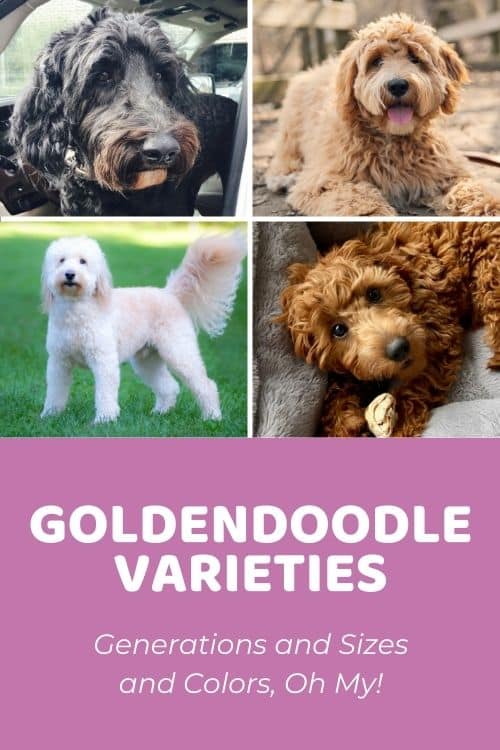
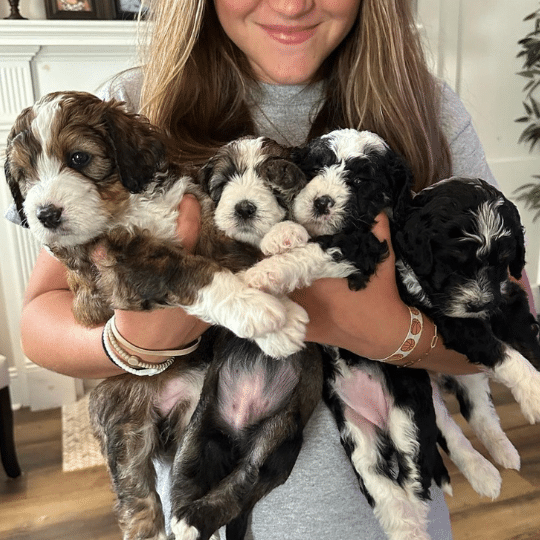
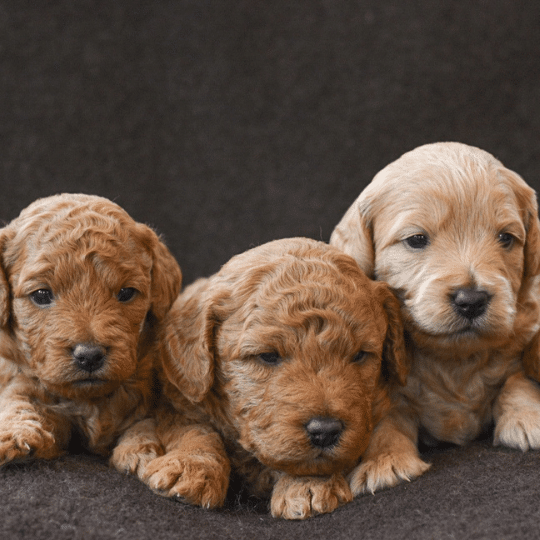
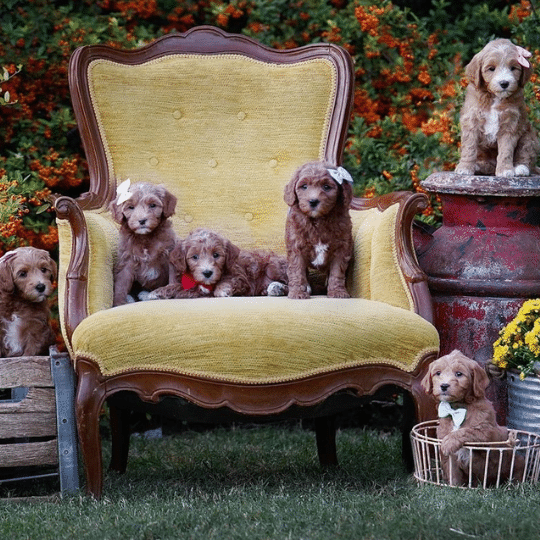
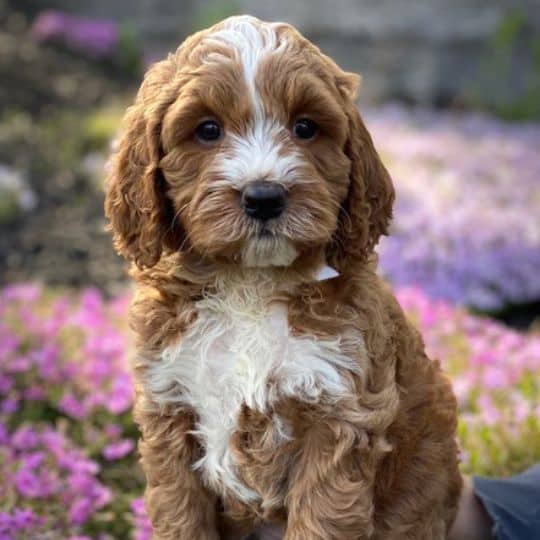

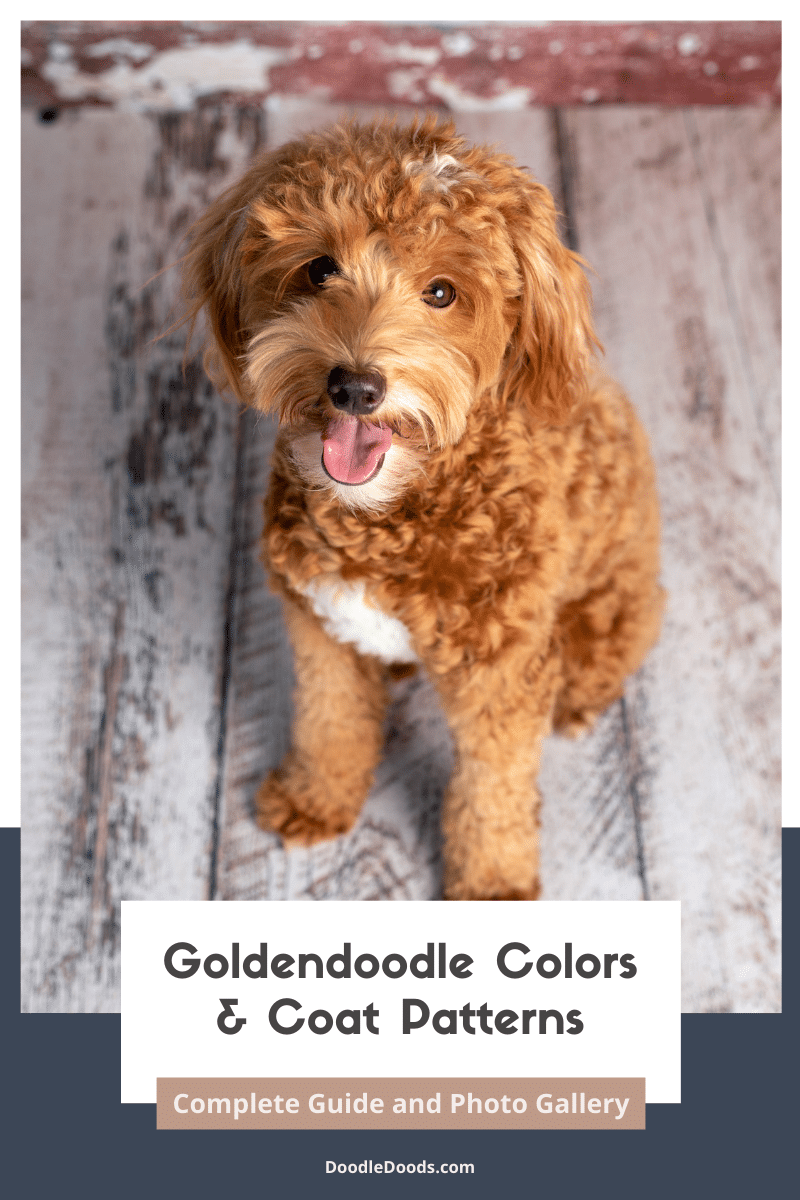
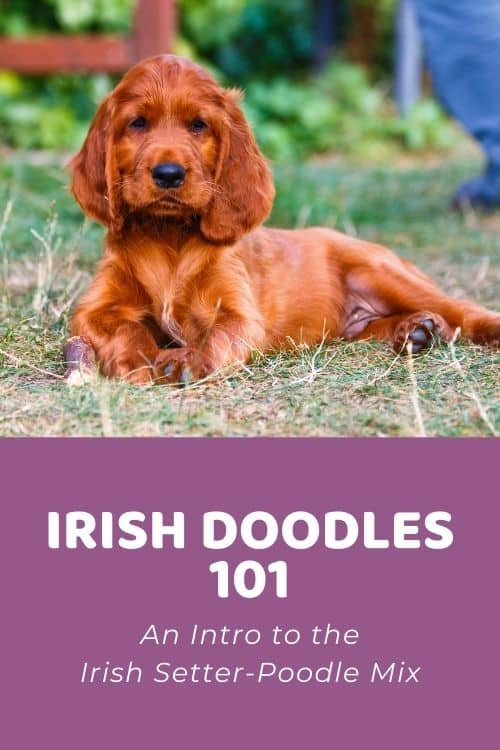
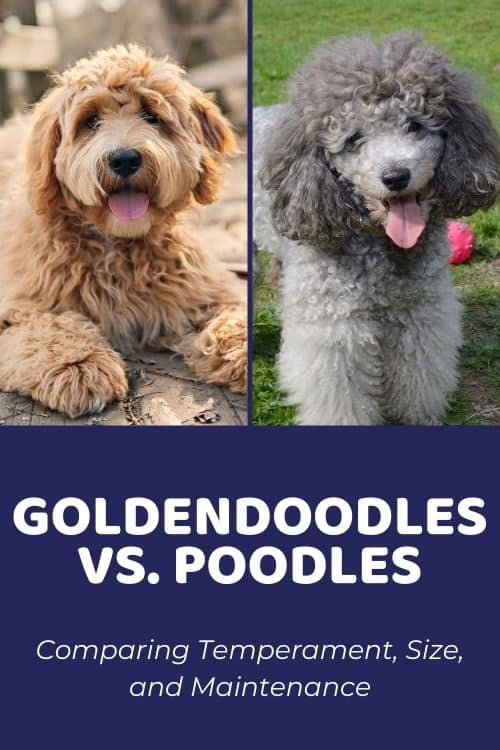
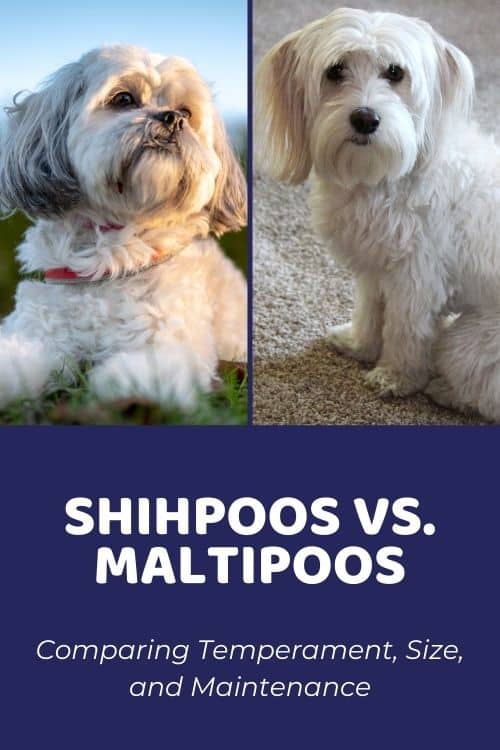

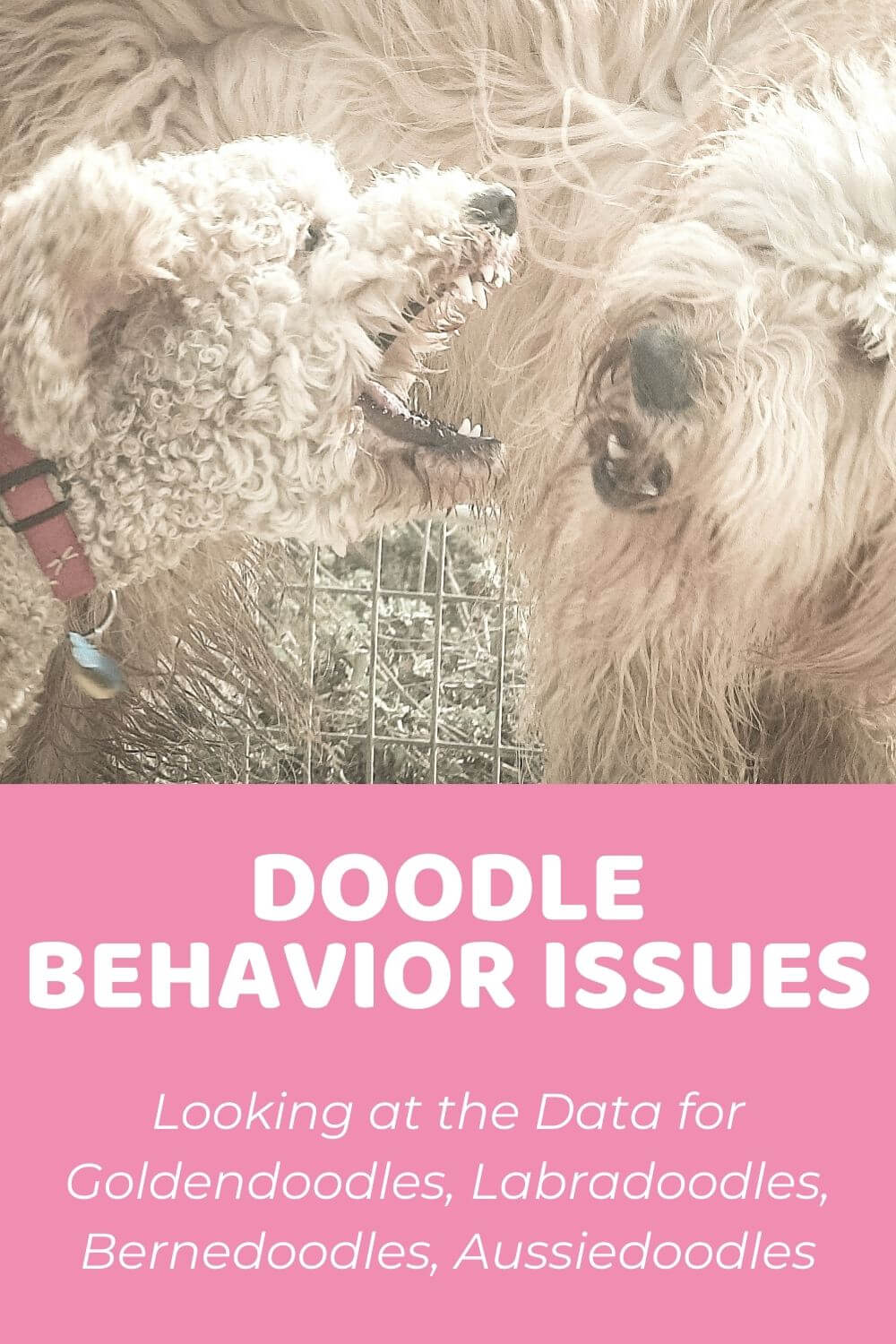
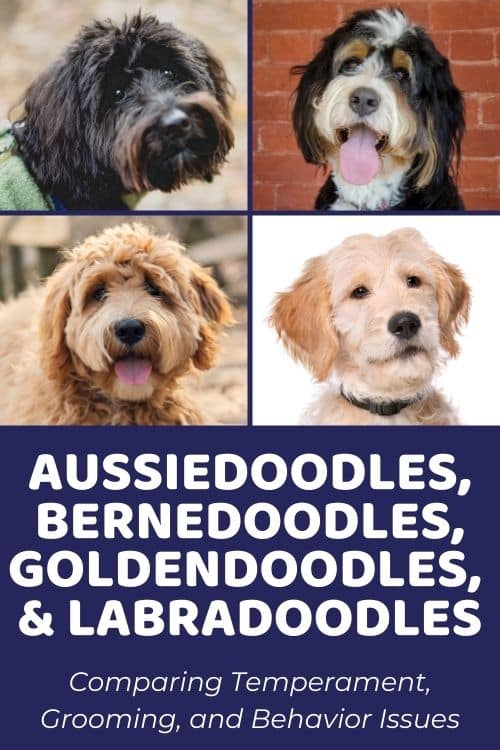

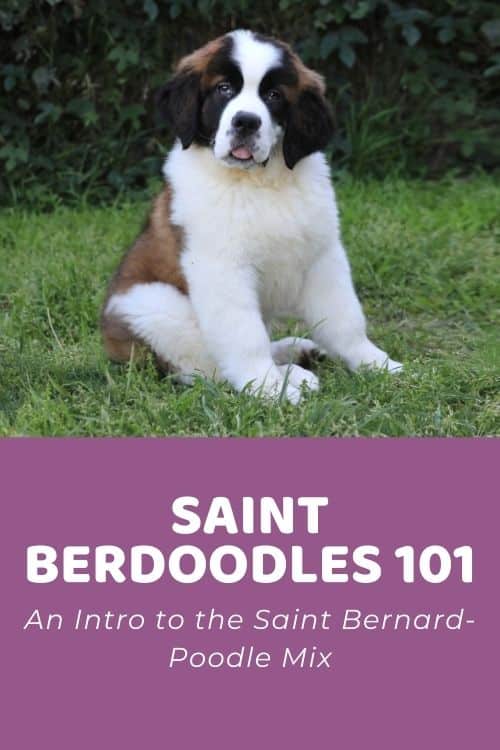
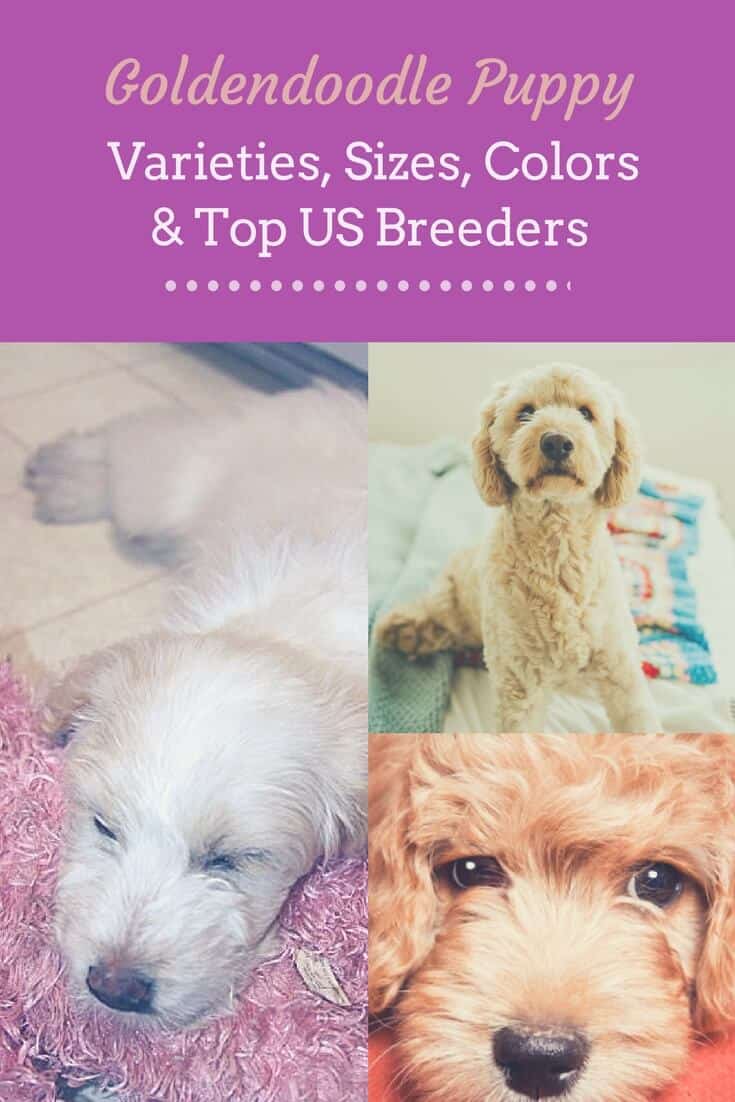
Wow, thank you for informing me that Goldendoodles can actually be a variety of colors including white, tan, or even black! About a week ago, I was talking to my sister, and she mentioned that she wants to get a puppy for her son’s birthday. She wants a really loving puppy; I wonder if she should look into getting an English Goldendoodle puppy.
April 2, 2020 at 10:59 amThere is a beautiful Sable color…it is gorgeous!
September 20, 2020 at 9:53 pm